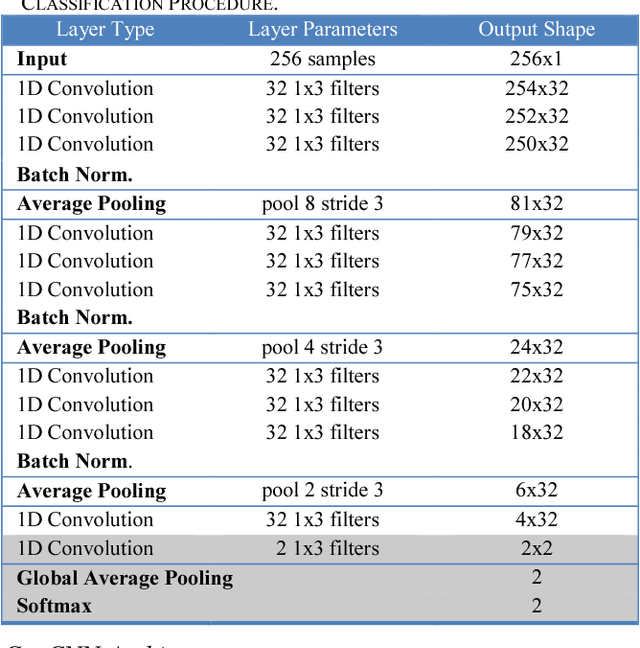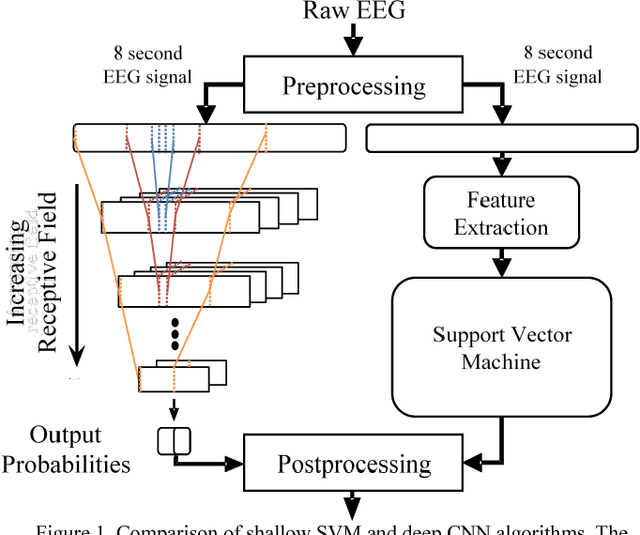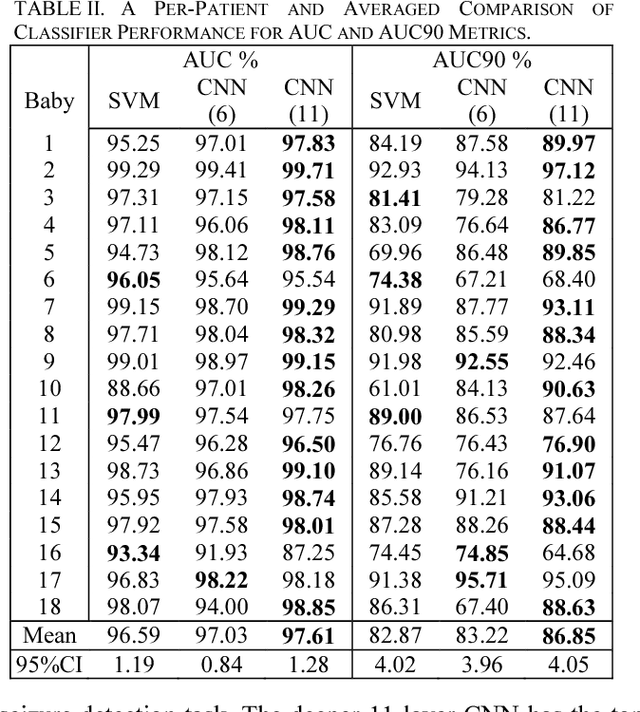Investigating the Impact of CNN Depth on Neonatal Seizure Detection Performance
Paper and Code
Jun 08, 2018


This study presents a novel, deep, fully convolutional architecture which is optimized for the task of EEG-based neonatal seizure detection. Architectures of different depths were designed and tested; varying network depth impacts convolutional receptive fields and the corresponding learned feature complexity. Two deep convolutional networks are compared with a shallow SVM-based neonatal seizure detector, which relies on the extraction of hand-crafted features. On a large clinical dataset, of over 800 hours of multichannel unedited EEG, containing 1389 seizure events, the deep 11-layer architecture significantly outperforms the shallower architectures, improving the AUC90 from 82.6% to 86.8%. Combining the end-to-end deep architecture with the feature-based shallow SVM further improves the AUC90 to 87.6%. The fusion of classifiers of different depths gives greatly improved performance and reduced variability, making the combined classifier more clinically reliable.
 Add to Chrome
Add to Chrome Add to Firefox
Add to Firefox Add to Edge
Add to Edge